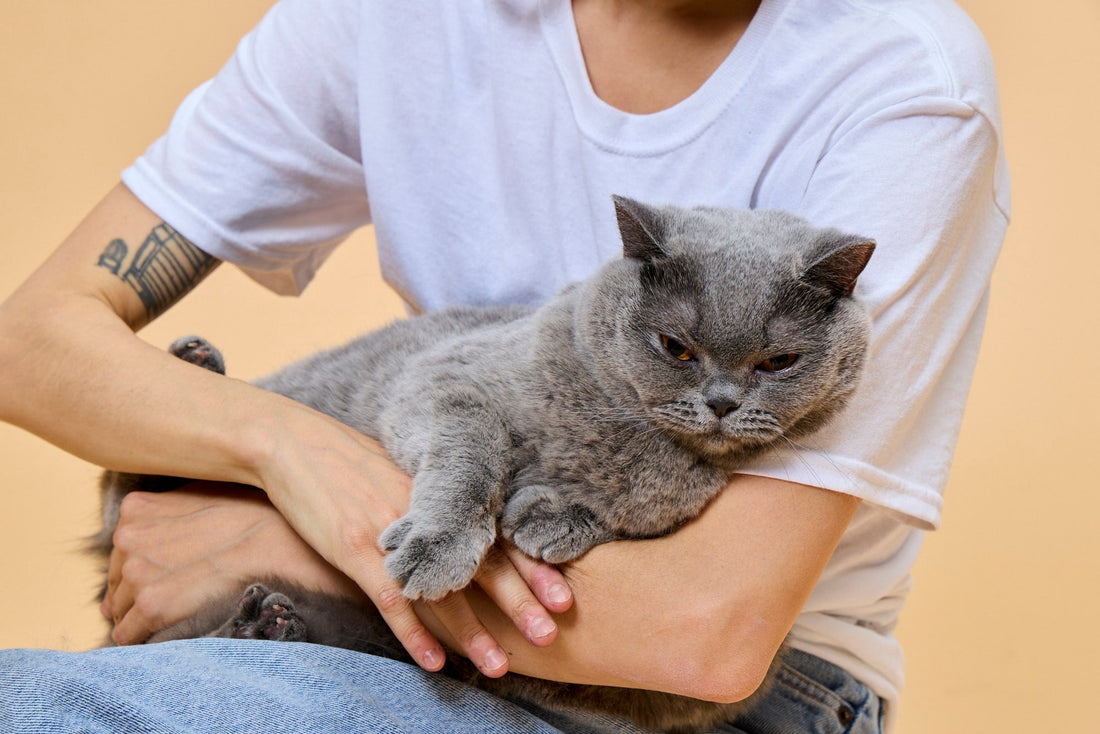Hello humans.
You can’t pawsibly understand how ingenious us cats are. Don’t even try. The humans have gone along (without my pawmission) and written this deep-dive into us clever cats. It definitely needs some work, but I have stamped my paw of approval in the hope that some of my furry friends will be better understood.
With (tuff) love,
Fuzz
P.S In lieu of fanmail, SEND TUNA!!

Uh, thanks, Fuzz.
As all cat parents know, no two cats are ever the same. There are affectionate cats, fussy cats, cats who hate other cats, cats who love tummy rubs and cats who’ll do anything to avoid being touched.
So, you’ve brought your furry friend home, and they’re having a *bite-sized* amount of trouble adjusting. Don’t worry, we’ll explain how to navigate it all. If you’re struggling with a shy or unsettled cat, don’t hit paws on your sanity just yet. First up – it helps to understand the basic behaviours of cats.
Let’s Be Honest: Cats Are Territorial
Well, they are. It’s been proven that the tiger shares 95.6% of its DNA with domestic cats. If there’s one thing we know about tigers… it’s that they know how to mark their territory. We’re sorry to break this to you, lovable owners, but cats are more attached to their belongings and space than their fur parents. We’ll let you nibble on that one…
In light of this news, here’s what all new cat owners need to know:
Understanding Playful Behaviours
When cats are playing, it’ll look like hunting behaviour. Don’t be too alarmed. Pouncing and a little nibble here, a little scratch there is natural behaviour. Cats are fierce and love to show it.
Sharing a Home With Your Cat
Mi casa es su casa. Your home is also your cat’s home, so you might have occasional unwelcome visitors … aka. their kill. Take it as a compliment, cats like to eat where they feel comfortable, what is to us is a dead mouse, is to them a luxurious present.
Keeping Your Cat Physically Active
Your furry friend is should be physically active. Cats need the space and opportunity to play out this behaviour. They descend from wild animals, after all, so riding it out is the least we could do. Invest in a great toy, a scratching post, somewhere to climb or anything to keep your new companion entertained for hours.
Cats Are Sensitive
Cats are sensitive to odours, sounds and vibrations, just like some of us humans! But have you ever wondered about the extent of their agility or why their sensitivity is so heightened? Here’s a rundown on it all:
Cats Have A+ Agility
Cats are so agile that they could easily make a living as acrobats! They have their highly developed vestibular system to thank, which regulates their sense of balance (it’s located inside the ear). As nifty little acrobats, cats are great climbers, too! Climbing up vertical surfaces is their forte, and they can jump upwards and horizontally. They can also walk high up on narrow ledges like tightrope walkers. If they fall, they usually land on their feet, and they can also change direction in the air. Talent!
Talking About Odours
No one likes a funky odour. (And not the good kind of funky!) But what is to humans a mild inconvenience can be a giant can of tunaworms for cats.
We often think of dogs as the only creatures great at sniffing, but a cat’s sense of smell is 1000 times better than ours. This is because cats have more than 200 million odour sensors in their noses, unlike us mortal humans who ONLY have 5 million. So it makes sense that they pick up on odours that our noses can’t detect. Things like air freshener, perfume, spoiled food, and the list goes on and on.
Sounds & Vibrations
The pads beneath the cat's paws allow them to sense everything that moves around them. Same for their whiskers — more sensitive than regular hairs because their follicles are made up of blood vessels and nerves. Cats use their faces to perceive the world around them and show their affection. This is why cats don’t like loud noises – their hearing is superior to ours, so what’s loud to us is like concert-level-loud for them. Their incredible sense of hearing allows them to hear rodents when hunting, and means they’ll know you’re rustling something up long before the dinner bowl hits the floor.
Independent Cats + Scaredy Cats
Although cats are highly aware and independent creatures, they can also easily feel stressed or frightened. Sadly, this doesn’t mean they’ll necessarily want to cuddle up with you. All cats have different characters, or temperaments, from friendly to preferring alone time . They might also like to be high up and watch what goes on around them — it helps them feel safe. Being a great cat owner is about noticing when your cat wants attention and when they want to be left alone! It’s a delicate dance, but as all cat owners know, it’s well worth it.
Emotional & Adaptable Cats
Although it might not seem like it, cats do have emotions, and lots of them! This is what helps them to survive in this crazy world! Feelings of fear, pleasure and anxiety are important and are natural feelings cats have that help them learn more about their environment. A cat’s natural response to any danger is similar to our fight or flight response. They much prefer to run away and hide, and only show ‘protective’ behaviours like biting or scratching when they have no choice. Not so unlike us.
Tips on Understanding Your Cats Behaviours
To help your cat feel more at home, creating a routine is a good idea. This not only reduces stress but also helps to improve your cat’s quality of life. Look out for any irregularities in your cat’s mood, like sleeping more than usual, not eating their food or avoiding contact with people, as this might indicate a health or a behavioural problem.
The trick to being a great cat parent is to be attentive, patient and observant. Knowing when your cat needs a cuddle and when they might want to enjoy some solitude. Some cats can be a bit kooky, but if you notice anything out of the ordinary, it’s best to pay a visit to your regular vet for a check-up.






